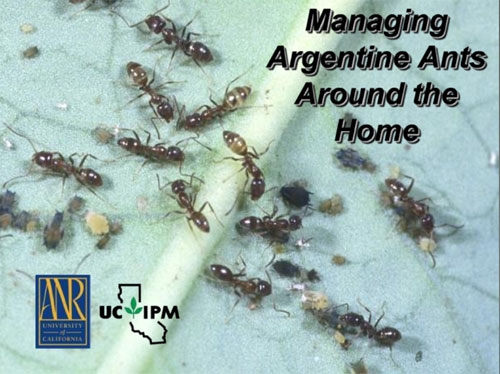Simple, smart and safe ant invasion solutions from UC Cooperative Extension were shared in newspapers around California today. The article, written by John Sammon, originated in the Santa Cruz Sentinel, and was picked up in the San Gabriel Valley Tribune, the Oakland Tribune, and the Pasadena Star-News.
The reporter used a UC Cooperative Extension information sheet as a source for background on ants. His story focused on the common Argentine variety, small black ants native to Argentina, Brazil, Paraguay and Uruguay. The ants reached the U.S. in the 1890s on coffee ships from Brazil.
In California, Argentine ants displace native ants and the small animals such as lizards that depend on them for food. The article said the ants also harm native plants that depend on native ants for seed dispersal, and they protect insect pests on agricultural crops by driving off species that prey on them, according to the UCCE information sheet.
The article also quoted UCCE Monterey County entomologist Jian Bi, who said homeowners should empty trash and make sure food particles are cleaned and containers tightly closed. In addition, he told the reporter that common household cleaners like Pinesol or Windex can be sprayed on ant trails to make the animals confused or disoriented by removing their scent trail.
"Like people, ants are community-oriented," Bi was quoted. "They're also highly organized."
Sammons collected the following strategies for preventing home ant invasions from home improvement and pest Web sites and UC Cooperative Extension:
-
Empty trash frequently.
-
Make sure food particles are cleaned up, counters wiped and food containers tightly closed.
-
Wash invaded areas with warm soapy water, or spray with a household cleaner to remove ant scent trail. A vinegar and water solution will also work.
-
Eliminate ants' water sources, such as leaks.
-
Caulk and seal cracks and crevices around the home's foundation.
-
Remove leaves, mulch and wood near the foundation of the home.
UC has produced a 20-minute video to help consumers identify, understand and manage Argentine ants. In addition, a diversity of resources - including additional videos, information sheets and photos - on ant management are available on the UC Integrated Pest Management Web site.
Attached Images:
